Its a sad but common story in Southern California.
A beautiful old hospital can't keep up with increasing demand for beds or modern amenities. It no longer makes enough money, so it stands vacant—while patients needing care have to travel farther to bigger hospitals with less personalized care.
In the case of the circa 1930 Cedars of Lebanon Hospital, it gets taken over by the Scientologists.
In the case of the circa 1924 Linda Vista Hospital, it provides housing to low-income seniors.
In the case of the circa 1888 land donation to the Veterans Administration in Westwood, its buildings are still vacant.
And one of the first hospitals in the San Gabriel Valley—St. Luke Hospital of Pasadena, circa 1933—has been used for nothing but film shoots for so long, it couldn't even be revived to care for COVID-19 patients when we were facing the prospect of a bed shortage.
As of right now, there's no plan to use St. Luke's for anything other than a film location.
But it deserves notoriety for more than as the setting for movies like Kill Bill, Million Dollar Baby (where it stood in for the Serenity Glen Rehabilitation Center) and La La Land—or TV shows like Grey's Anatomy, Dexter, and Scream Queens.
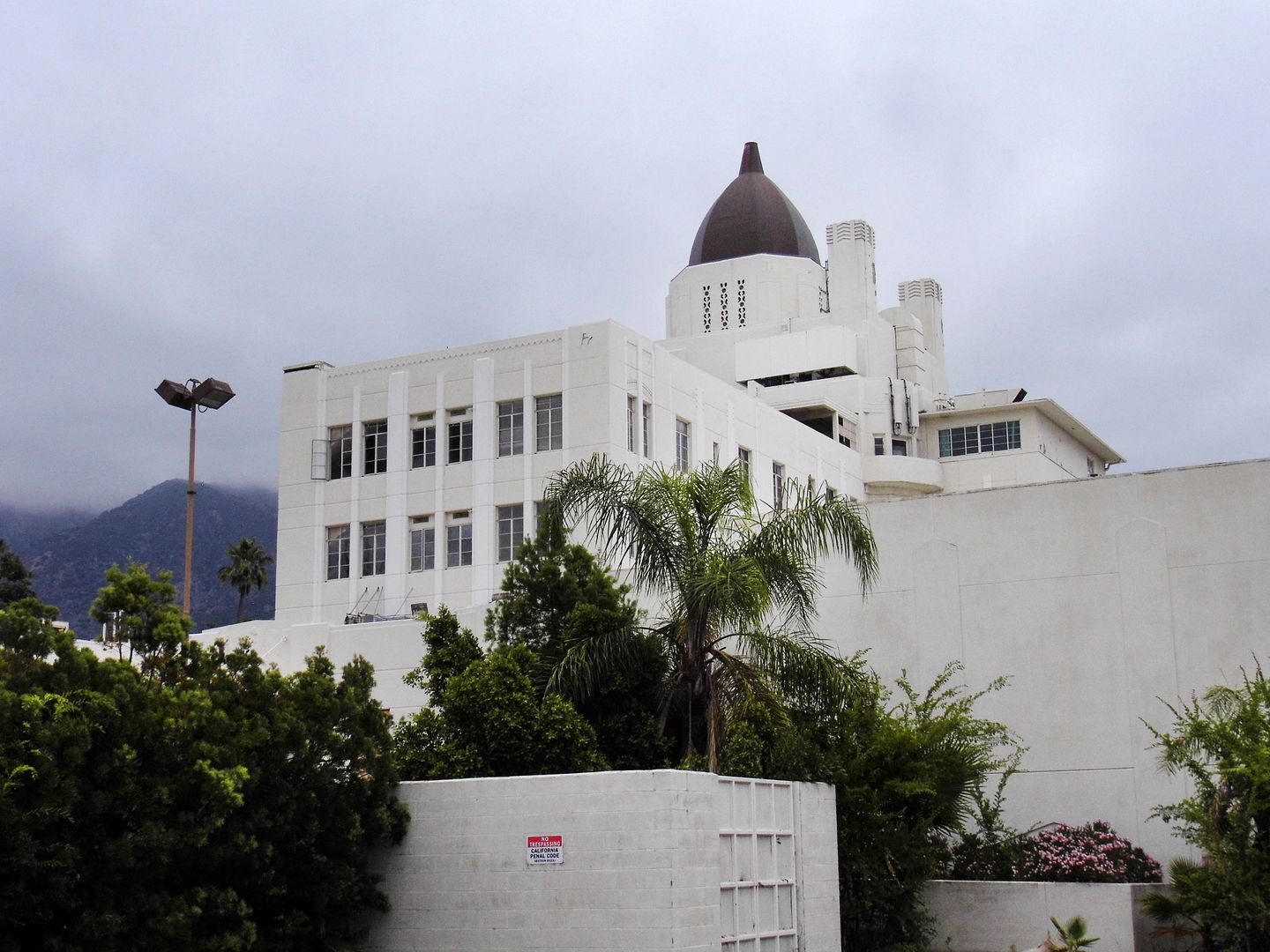
St. Luke's was founded as a non-profit, Catholic hospital by the Sisters of St. Joseph of Orange—a congregation of nuns whose mission of helping the poor and sick dates back to the 17th century in France.
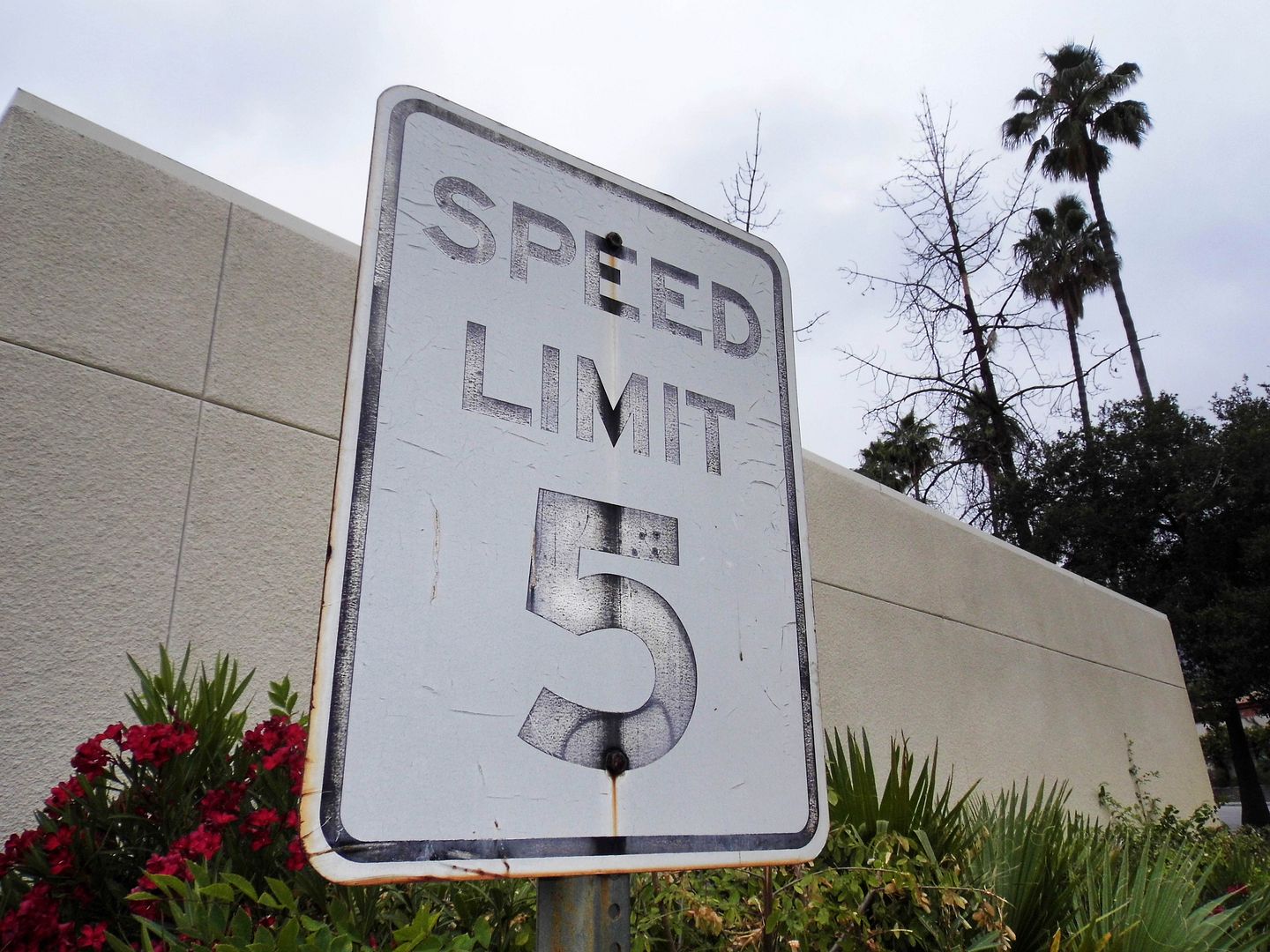
It wasn't just one building—but an entire enclave or campus of buildings that continued to grow into the decades that followed its original dedication.
.jpg)
Postcard image circa 1960s: eBay
The original monolithic hospital was designed in the Moderne style by Canadian-born architect Gene Verge, Sr. At seven stories high and 74,000 square feet, it was exemplary of modern concrete construction at the time.

Although at some point it was seemingly white-washed, it remains a postcard-worthy landmark—even on a gloomy day.
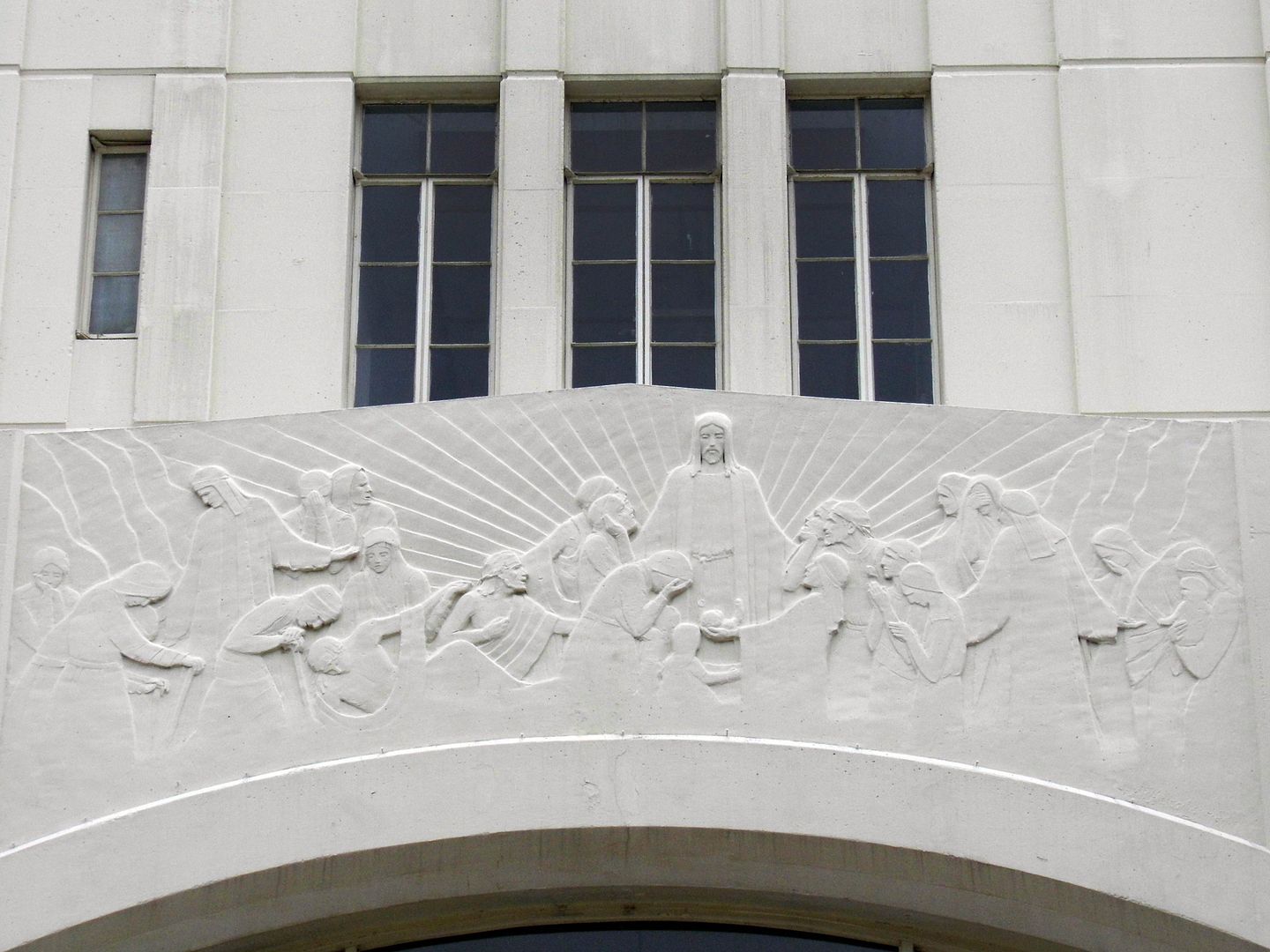
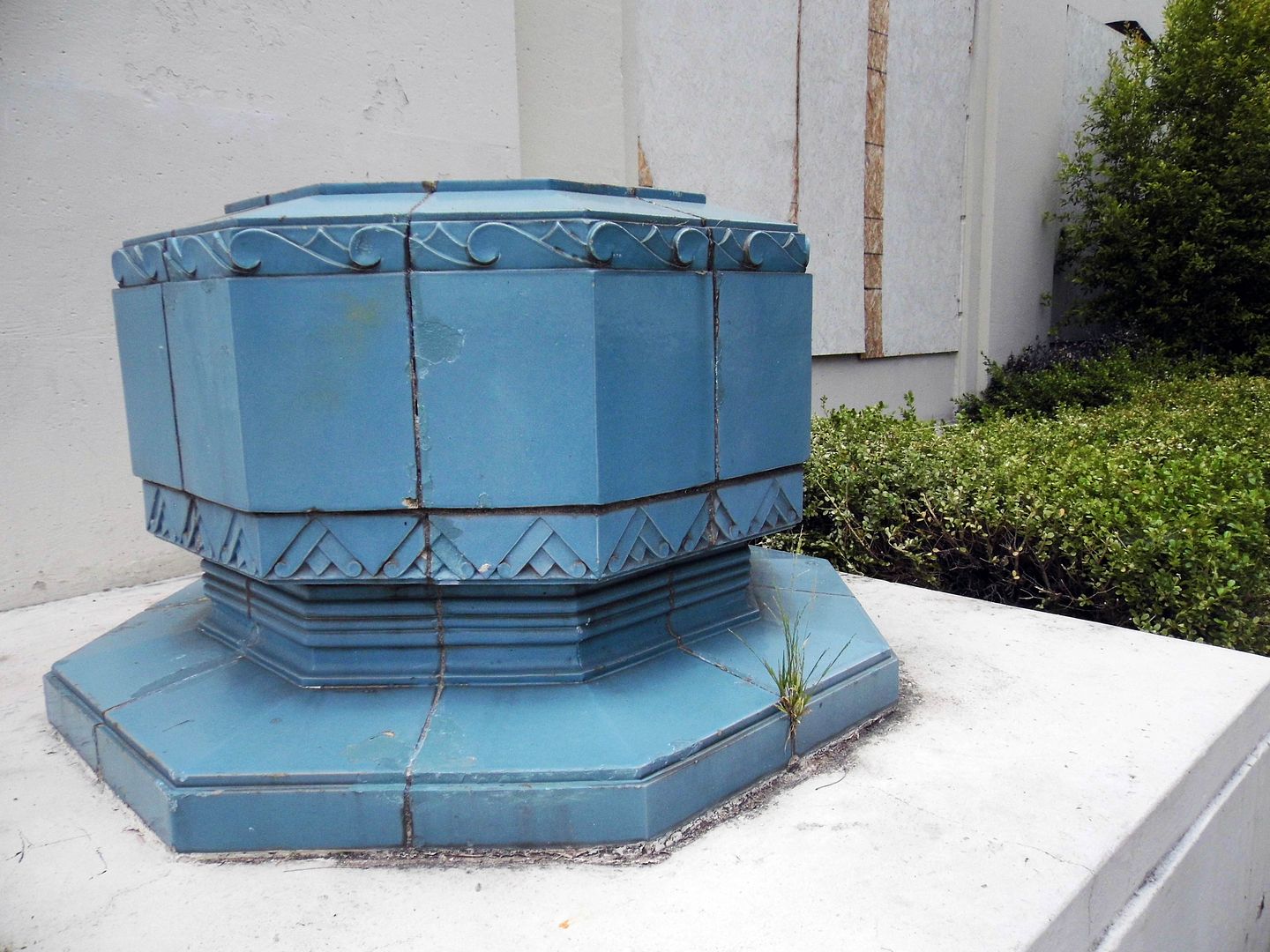
...as do two planters clad in turquoise-colored terracotta tile, ornamenting each side of the front door with chevrons and wave patterns.

The beacon for most Pasadena locals is the dome (or cupola), which was considered Spanish-style when it was covered in terracotta tiles—even when a neon cross was installed on top of it in 1965. But now, the current lead- and copper sheeting-clad dome dates back to only 1997—when it was replaced in the wake of the 1987 Sierra Madre Earthquake.
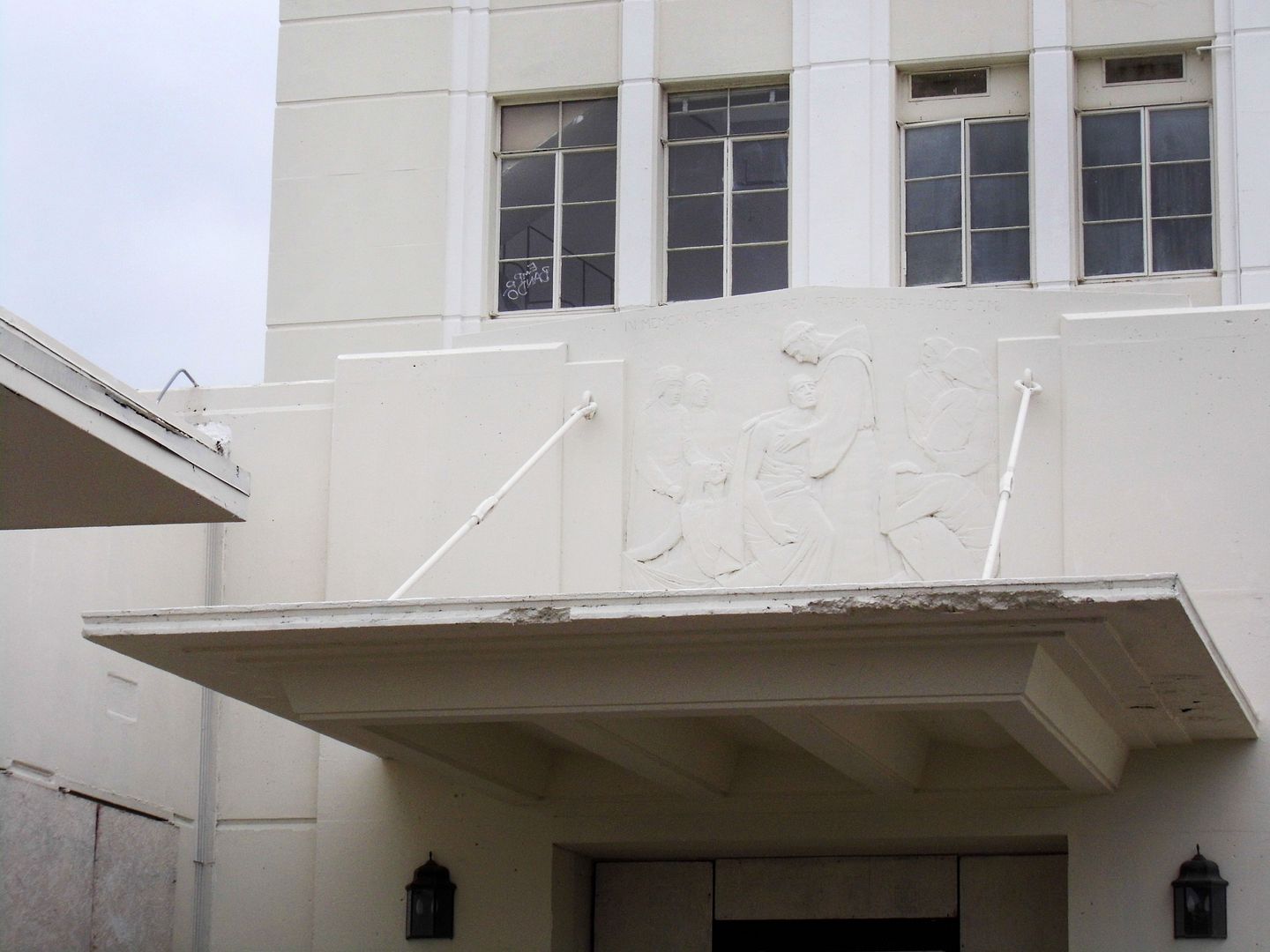
Through the 1980s, St. Luke's expanded to include five wings and annexes...
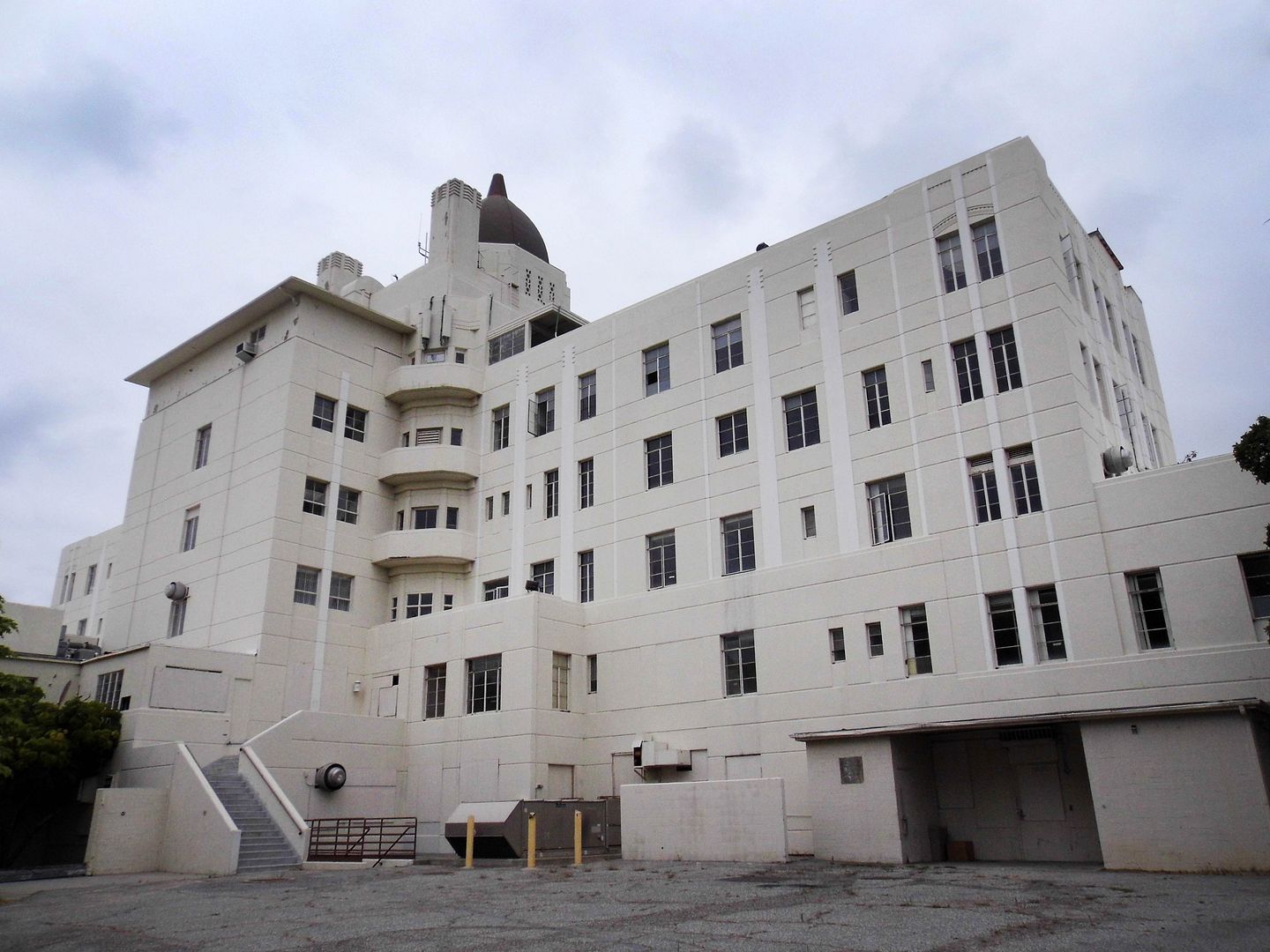
...including emergency and acute medical care, surgical services, and obstetrics/a birthing ward.

But none of them were nearly as architecturally significant as the Gene Verge-designed additions of the mid-1940s, which included a chapel (replete with stained glass windows, still extant) and a convent for the nuns.
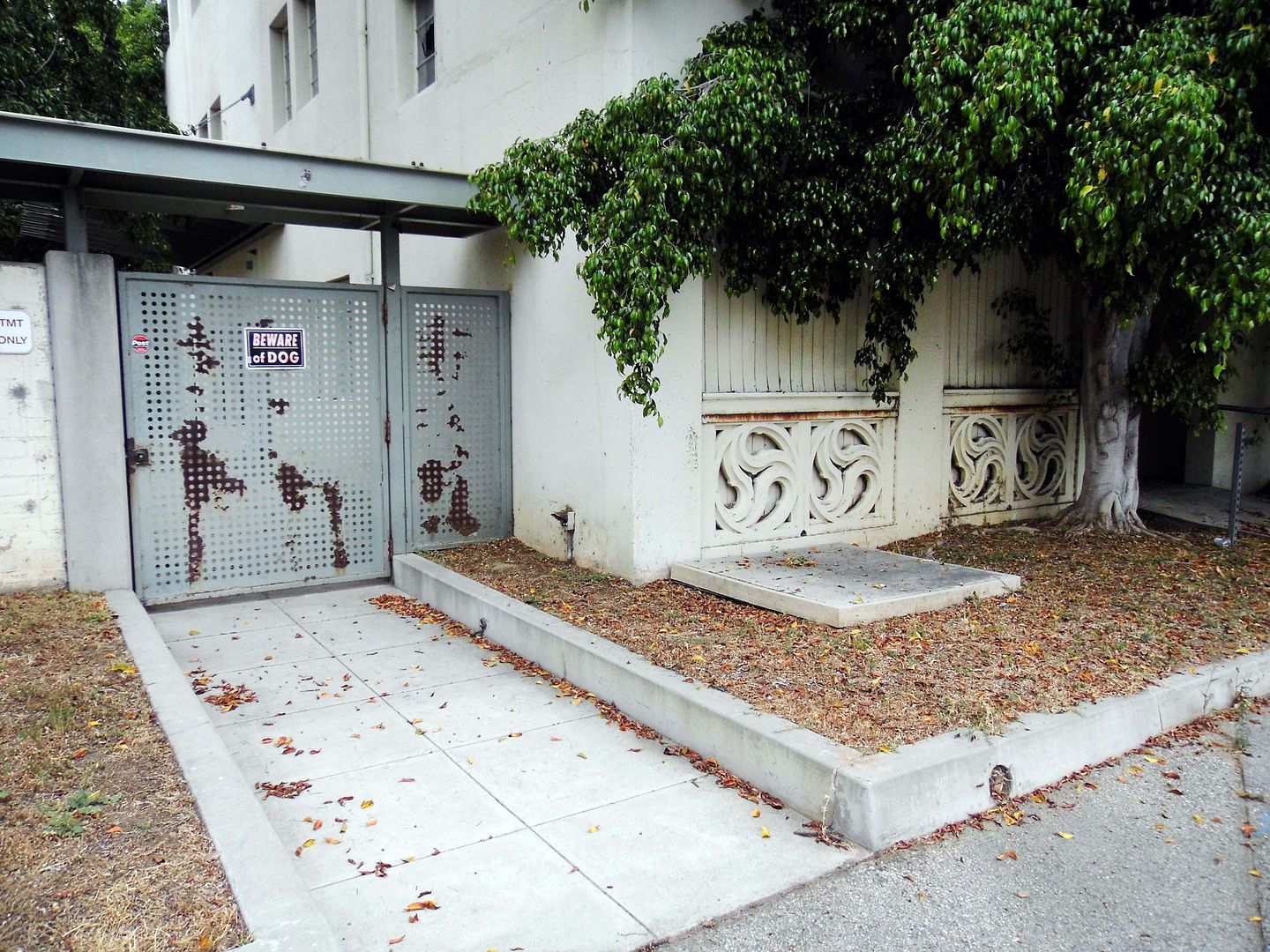
The 1980s, however, marked a huge change in the historical trajectory of St. Luke's—and not just with its rebranding as the St. Luke Medical Center.
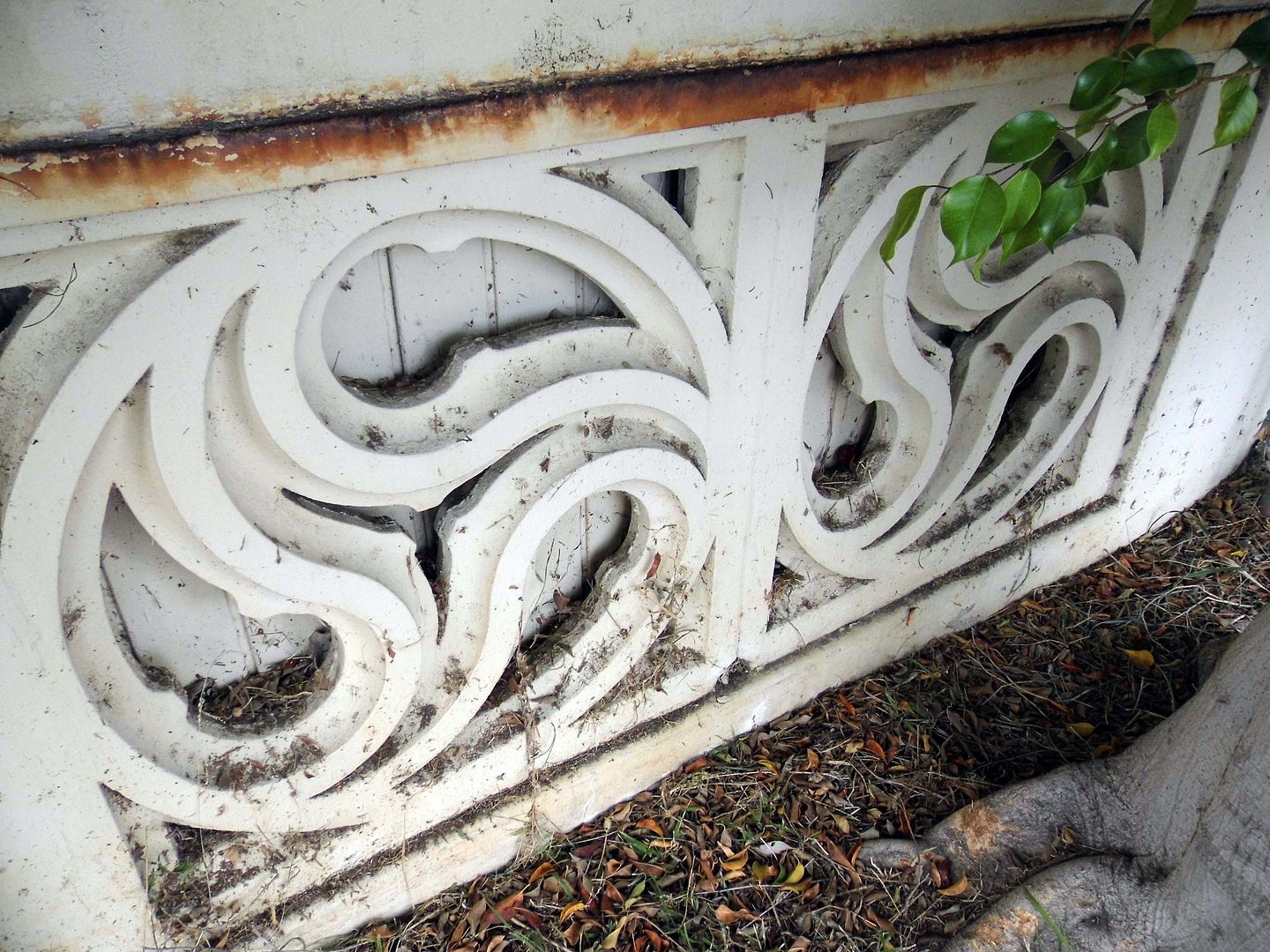
In 1985, the founding Sisters—and therefore, the Catholic Church— sold it (with the Vatican's approval to the non-sectarian, for-profit, private firm Summit Health Ltd.
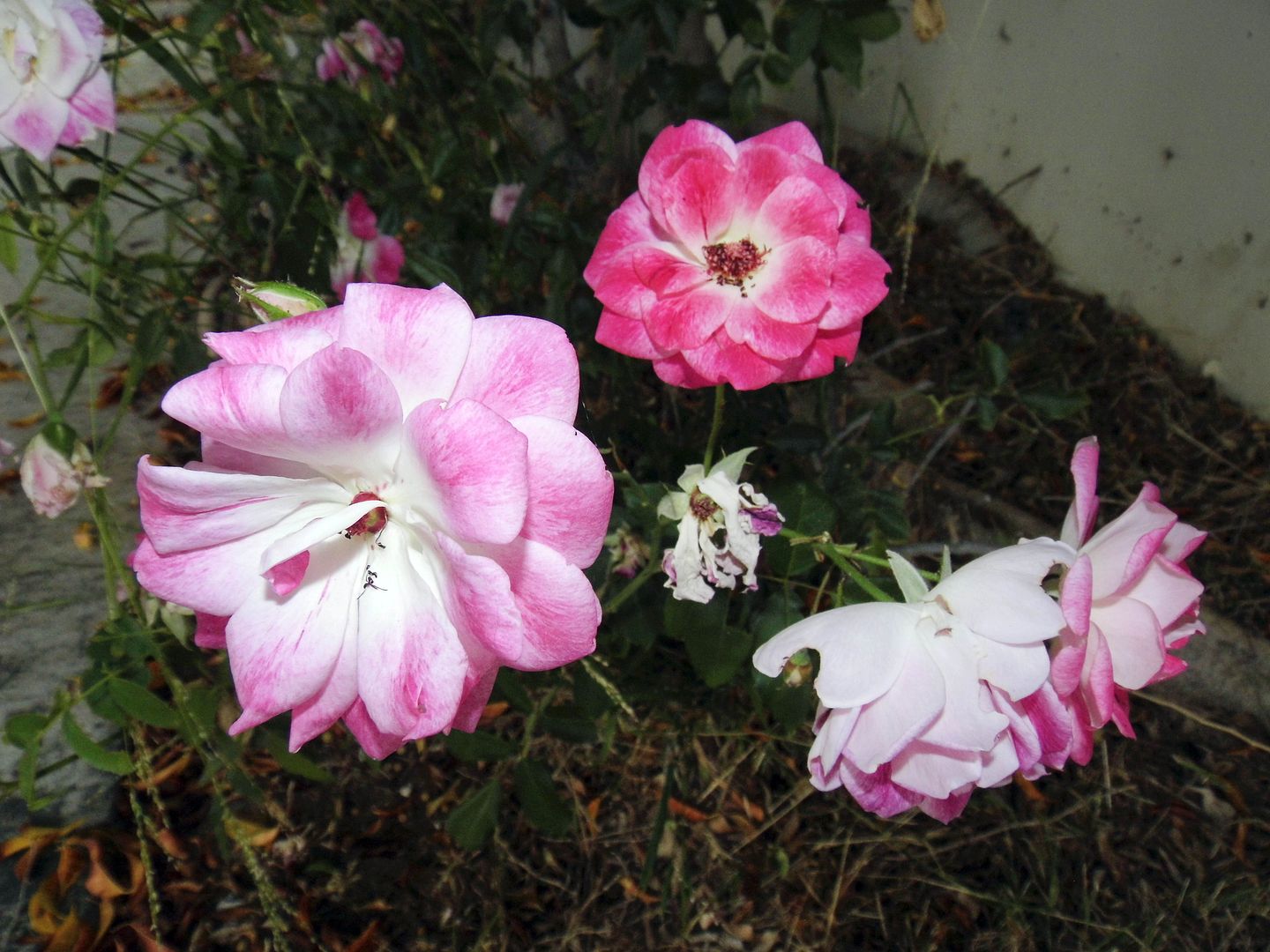
In 1986, the Los Angeles Times reported that the hospital was already "antiquated and inefficient" and "badly in need of renovations" to "correct the ravages of age."
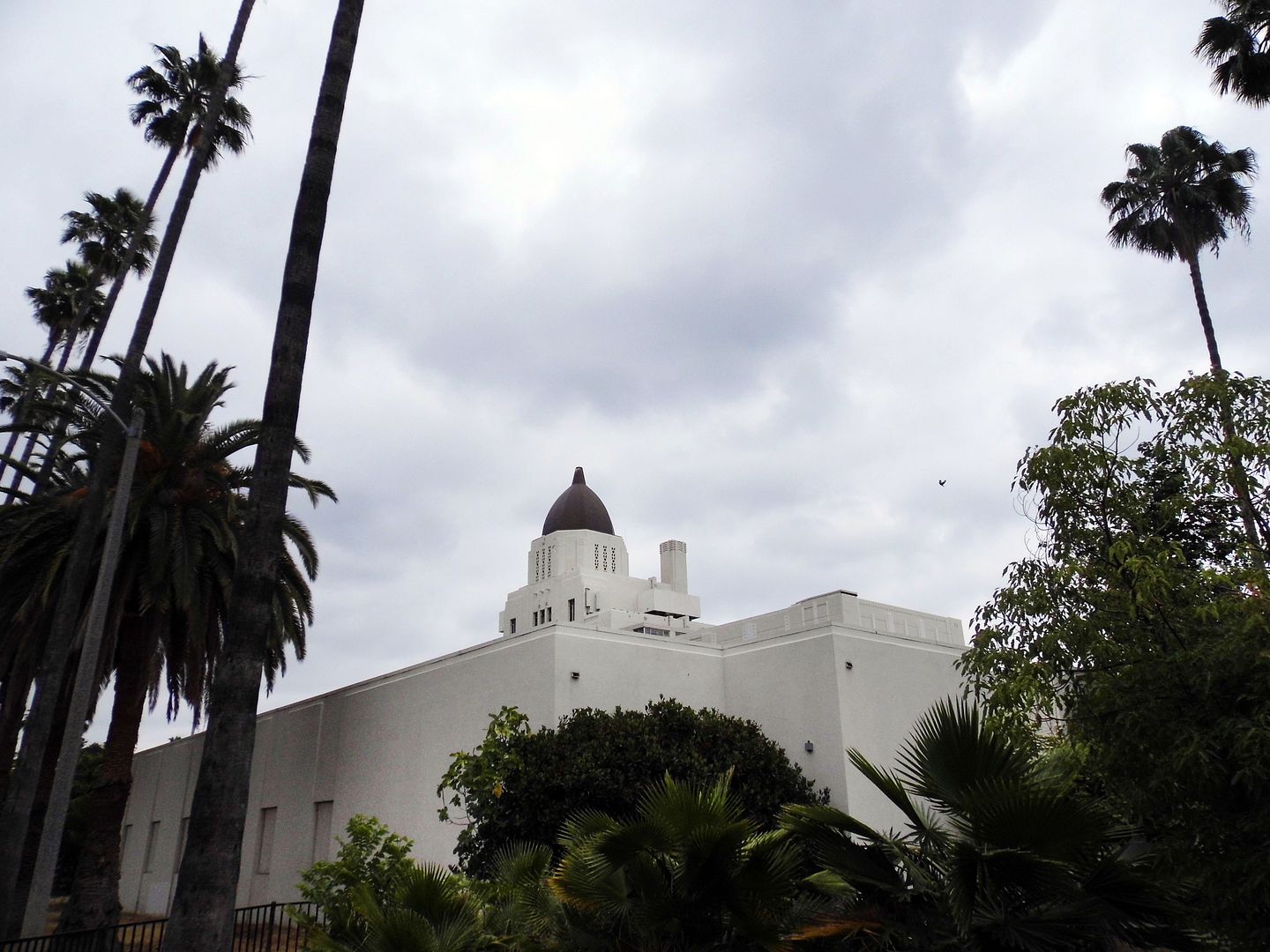
In 1994, ownership transferred to OroNda Healthcorp, which was bought by Tenet Healthcare Corporation in 1996. Tenet closed the 165-bed hospital in 2002 and sold it a year later to Pasadena-based educational institute Caltech, which intended to use it for office and research space.
When that didn't work out, Caltech sold St. Luke's in 2007 to Beverly Hills-based real estate developer DS Ventures, which attempted to convert it into an assisted senior facility while an opposing group pushed for an urgent care facility.
None of that has happened yet.
And when officials visited St. Luke's to determine whether they could commandeer it during the pandemic, they discovered that the plumbing has been stripped out. (It's unclear whether that was intentional or the work of copper thieves.)
Presumably, the terrazzo floors and wide, winding stairways remain inside. I've yet to get in to confirm that one way or another.
But I haven't lost hope.
Fortunately, the Pasadena City Council declared St. Luke's hospital, convent and chapel a local Cultural Heritage Landmark in 2002—which offers it some, but not absolute, protection.
Im the meantime, it's nice to imagine what it was like when the gardens were kept up and the lawns were manicured, the dome tiled and its cross all lit up.
Drone video via Getty Images, for editorial use only
Related Posts:

I was born there in 1956. My Dad said It cost him $125.
ReplyDeleteI was also born there in 1956. My sister before me was born there and both of use were adopted to different families. I wish it were open so I could see it.
DeleteI was born there in October 1964. My grandfather was treated there a couple of times for health issues, and my husband was treated there for a deep laceration to his hand. Best hospital, in my opinion and a great staff and doctors.
DeleteMy last 3 children were born there!
ReplyDeleteMy brother was born there in 1947--I drive by it a lot and it just breaks my heart.
ReplyDeleteMy niece Chelcei and goddaughter Angel were both born here, I remember the nuns coming to sing at night to the babies, and the cross that was purchased by someone once it was closed.
ReplyDeleteI was born here in 1949 and it was closed on my birthday 4-3-2002
ReplyDeleteSandi--Just drove by today to pay homage to my mom, who became a mother there in 1956. Looks just as you have captured it. My earliest childhood memory was picking up my mom and newborn sister here 3 years later.
ReplyDeleteJeff Burbank
I was born there in December of 1953.
ReplyDeleteI was also born there December of 1953
DeleteI was born there on November 30,1967.
ReplyDeleteI was born there 1966
Deletehearbroken. recently visited Pasadena and to visit St lukes was on our
ReplyDeletebucketlist !!!
I was born there 2 April,1957; my brothers were born there 11 July,1959, 12 April,1961. Mom and Dad always recalled fondly how beautiful the facility and grounds were, and what ‘a tight ship’ the nuns ran it. 🤭 I wish I could go inside and have one last look. 💕
ReplyDeleteI was a patient here in 1968 at the age of 13. Came from Arizona to see Dr Norquist for scoliosis. Had spinal fusion. I remain contact w my hospital roommate who lived and still does in Mexico. I remain grateful to the nurses and doctors who were my care team. Susan
ReplyDeleteI remember Dr.Norquist. I was born there in 1949. My mother was a mursr there until mid 1980’s for over 30 years. I went to the 100th birthday party for the hospital. Everyone who was born there was invited if they could find us. There was a giant birthday cake for everyone and a wonderful festival and carnival in the West parking lot. I went to Pasadena high school and walked there every day after school to wait for my mother and ride home with her. The Little cafeteria always had delicious food and wonderful lemonade such good memories. So sad that is so dilapidated. I really hope it gets historical treatment.
DeleteSister Mary Luke of the Sisters of St. Joseph of Orange established the Medical Technology training program at St. Luke's Hospital and oversaw it for many years. I was fortunate to be accepted into the training in 1977 and have always been so thankful for the many caring professional laboratory technologists, pathologists, nurses, and other staff of that beautiful hospital.
ReplyDeleteJoanne
I was Born there 10-27-1968. I remember receiving many Asthma Treatments there. One in particular when a Nun sat on me to receive an Injection. I was and am not Fond of Shot’s!
ReplyDeleteThe sisters/nuns were so lovely back then. My sister was born here on 30 May 1959; my youngest brother was born here in 1961. They both had tonsillectomies here. I spent a very happy year or more as a 'yellow pinafore-wearing volunteer' while in high school (1964-1965 approx.). Had my first knee surgery here at Easter Break in 1966. My mother died here in 1972 and was buried on a knoll at Resurrection Cemetery which I visited just today for the first time in about 45 years. From my mother's gravesite I remember how when she was buried I was absolutely convinced that I could see Saint Luke's dome shining in the distance; today I believe that I could see Mount Wilson from her gravesite. And then, I find this website to round out my day of remembering. Thanks and blessings to all who maintain this site and to those who have commented.
ReplyDeleteGlad you found us!
DeleteI was a candy striper in the birth center for high school credit, but it was my first experience in the professional world and I enjoyed it so much. I got to feed babies and console moms. I still live in the area and pass by sometimes, so it breaks my heart to see what’s come of it - graffiti, dead plants, boarded up…
ReplyDeleteCurrently neglected on the outside. Broken windows, graffiti, overgrown vegetation…a depressing site to see. Something needs to be done. Time for major thought & action before time continues to tarnish the site & Pasadena.
ReplyDeleteI was born on 1960. Later 1974, sister nun told me that old delivery newborn room was closed. I found out 2 sister nuns were ghosts. I was quiet.
ReplyDeleteI’ve been doing a geneology search trying to find information on my grandmother that passed away when my dad was 2 years old. I found her death certificate and it states that she died here in 1943 from surgery complications. I’m glad to have a physical structure for her memory.
ReplyDeleteI worked at an outbuilding which had been a residence for Filipino nursing assistants. I was manager of a drug detox program funded by United Way for two years in 1970's. At that time it still had a functional emergency room, but it was already in a state of disrepair. I left Pasadena in 1979 and had no idea that it had become such a monstrous dilapidated survivor. I was always impressed by the art deco designed buildings and murals.
ReplyDeleteIn November of 1968, my family was in a horrific car crash in Pasadena; parents 1965 Fury II was hit head on by a tank of a Cadillac head on that had hit 4 cars prior and was driven by a drunk male driver. Tracheotomies needed for both parents on the street at the accident site. Mom was taken to Huntington, Dad to St. Luke’s. My Uncle said, after seeing my Dad, that he looked “like Vietnam” and was very worried that he’d never survive. A surgeon at St Luke’s named R. Fiskin somehow saved his life. (He had gone head first through the windshield in the head-on crash). It was a critical time for our family then. So thankful for the competence and skill of the staff at that hospital for our family way back then in the 8th year of my life.
ReplyDeleteIn November of 1968 my family was in a horrific car crash. Our 1965 Plymouth Fury II was hit head on by a tank of an older Cadillac driven by a drunk driver who had hit 4 other cars just prior to hitting ours. Tracheotomies were performed in the street on both my parents at the crash site. Mom was taken to Huntington, Dad to St. Luke’s. My Uncle said that my Dad “ looked like he’d been in Vietnam combat and feared he’d never survive. A brilliant surgeon at St. Luke’s named R. Fiskin somehow saved his life ( he had gone head first through the windshield and had significant glass in his head). I’m so grateful to the skill and competence of the staff at St. Luke’s hospital way back then in 1968. They saved our family from life changing trauma in the 8th year of my young life.
ReplyDeleteI was born there in 1949. My mother was a nurse there for over 30 years until the 1980s. I went to the hospitals 100th birthday party. They invited everyone who was born there if they could reach us. It was a wonderful party with a giant birthday cake And a wonderful carnival. It is so sad that it has been so neglected. I really hope that the historical society can do something that makes it nice again. Such a beautiful place and wonderful memories.
ReplyDeleteI was also born there in 1949. It’s a wonderful memory of my community.
ReplyDelete